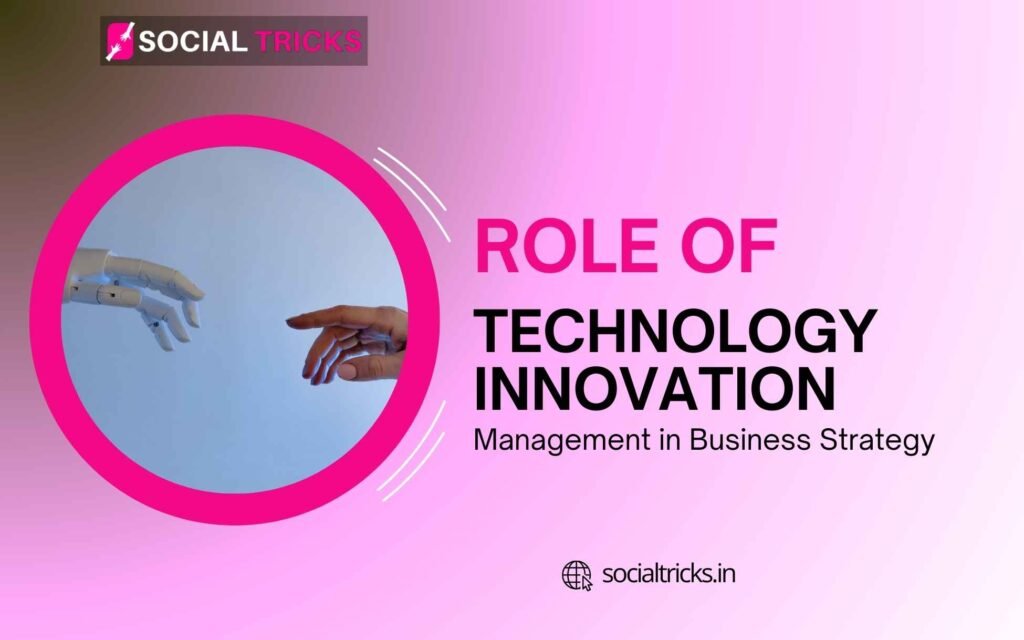In the present-day, ever-changing scenario, businesses have to be always upgrading, or else they fall behind their competitors. Innovation in technology management plays a critical role in the success of any business. This management ensures companies efficiently use technological advances to optimize operations, elevate consumer appeal, and achieve long-term vision.
Let us trace the significance of technology innovation management in shaping business strategies and driving growth.
Meaning of Technology Innovation Management
Technology innovation management involves the process where new technology is planned, executed, and overseen in an organization. It focuses on:
- Identifying innovative technologies that can enhance business operation
- Integration of these technologies in the existing workflow
- Change management related to new technologies
Being always in sync with technology trends assures that businesses stay competitive and cater to market demands.
Reason for the Importance of Technology Innovation Management
1. Efficiency Enhancement
Work is streamlined, and accuracy improved upon through technology as it does away with drag factor activities. For example:
- Automation tools: Automation of manual tasks through software applications such as CRM.
- Cloud computing: Better storage and retrieval without investing in required hardware other than the means of connectivity.
2. Customer Experience Improvement
Demanding services must be prompt, reliable, and personalized. Technology is supporting enterprises in capitalizing on these expectations:
- Chatbots: Instant responses to customer questions and service.
- Personalized marketing: AI-powered tools analyze customer behavior and provide tailor-made recommendations.
3. Innovation Enabler
Innovation leads to new products, new services, and new business models. Companies that leverage technology can:
- Launch products faster.
- Experiment with different strategies to find out what works best.
Principal Components of Technology Innovation Management
1. Technology Scouting
This involves searching for and evaluating promising emerging technologies. For example:
- Artificial Intelligence (AI): Studies suggest about artificial intelligence could be the most beneficial technology for predictive analytics and process automation.
- Internet of Things (IoT): Works well in enhancing the connection between devices for smarter operations.
2. Change Management
The introduction of new technologies in most cases necessitates changes in working practices of workers and changes in their roles. Efficient change management should involve:
- Training employees to use the new software.
- Communicating the benefits to motivate for the change.
3. Risk Management
Lifecycle threats are faced by new technologies. It could be anything from leakage of data to what is termed to be downtime in common terms owing to an interruption in system functioning. Risk management comprises:
- Security audits
- Creating backups to keep data safe
The Steps to Incorporate Technology Innovation into Business Strategy
1. Address Business Needs
- Identify key issues in your system processes.
- Specify the objectives of the new technology.
2. Conduct Market Research
- Research the technologies on which your competitors are relying.
- Understand the expectations of your customers and the trends in your particular industry.
3. Develop a Technology Roadmap
- Plan the process of software installation, including training of employees to use new tools and budget allocation.
4. Test and Pilot
- Start a small pilot project to test the technology.
- Provide opportunities for feedback.
5. Monitor and Optimize
- Make sure the technology is doing what it’s supposed to do to manage the business.
- Update the system.
Real-Life Examples
1. Amazon and AI
Amazon has acquired AI for real-time personalized recommendations and warehouse automation for the following reasons:
- Gaining a 35% increase in sales because of this (personalized suggestion)
- The speed of its supply chain has been improved with the automation of stocking and order management.
2. Tesla Vehicles: An Engineering Wonder
Tesla, providing technological advancements in car manufacturing and engineering, has judged ahead of the curve.
- Adds several safety features in cars- Autopilot for added driver safety
- Apply remote software updates proficiently
Tesla has now engineers’ leadership in the electric vehicle market.
Challenges with Technology Innovation Management
1. High Costs
High initial costs are involved in the implementation of the new technologies that most times leave businesses weighing the costs with the advantages.
2. Resistance to Change
Whenever there is a change introduced, people resist; they perceive changed systems as a potential job loss or increased job responsibility. Ways to subdue all such reactions:
- Training neat programs, employee involvement sessions.
- Journey to buy-in sessions from internal stakeholders.
3. Racing Ahead of the Fast-Paced Innovative Technological World
Technologies move very fast, and businesses have a hard time keeping pace. By regularly doing market research and following agile strategies, some of these things get some response.
Advantages of Embracing Technology in Business Strategy
- Increased productivity | Automation should reduce errors usually brought about by manual work, which in return means efficient work.
- Better decision-making: AI-driven models are capable of providing insights required to guide stakeholders in making strategic decisions.
- Competitive advantage: Becoming early adopters who stay ahead of the curve.
Looking into the Future: Technology Innovation Trends
- Artificial Intelligence (AI) – In AI cases, the system extends wider assistance to decision-making and to automate complex tasks mechanically. Swiss global networked audit firm PwC recognizes AI as contributing up to $15.7 trillion to the global economy by 2030.
- Blockchain Technology – Everything in a blockchain is undeniable, secure, transparent, and distributed, and these attributes are highly favorable to finance and supply chain management.
- 5G Connectivity – Extremely accelerated internet services will probably change the landscape of various sectors like healthcare, gaming, and manufacturing.
Conclusion
Technology underpins technology innovation management, one major influence on today’s business strategy-making. It is against this background that one would rather link the indifferent employer and the need for care in planning, updating the systems, and getting the employee’s help.
In the fast-changing world, innovative businesses tend to shine on. Better push your business using technology with a guaranteed claim of securing the future.


